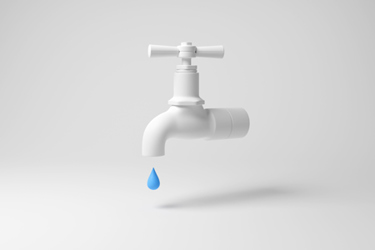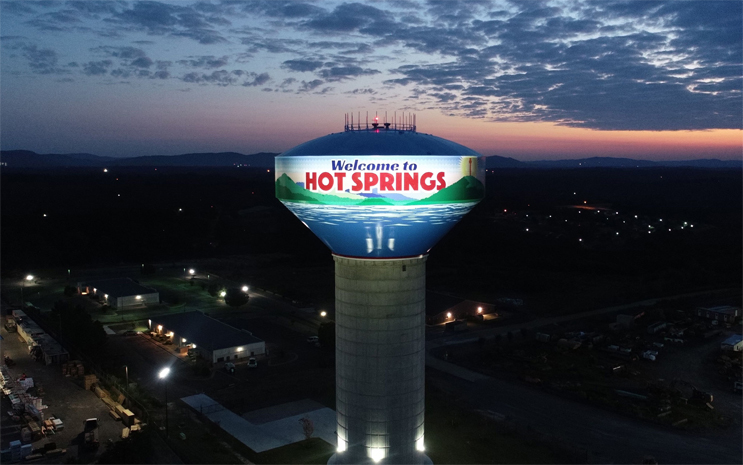Modern Solutions For Aging Water Systems: AMI And Beyond
By Trey Overman

Lessons from two communities on the benefits of advanced metering infrastructure.
Water utilities in North America are grappling with aging infrastructure that is increasingly prone to leaks, inefficiencies, and costly repairs. Many systems, built decades ago, were not designed to meet today’s operational demands or population needs. Fortunately, digital technologies such as smart metering, advanced metering infrastructure (AMI), and software platforms help utilities modernize operations, regardless of the age of their pipelines. These solutions provide near-real-time insights, enable proactive maintenance, and help reduce non-revenue water (NRW). Digital tools allow utilities to manage their existing infrastructure while also future-proofing against additional strain, such as an increase in population.
Leverage Advanced Metering Infrastructure To Optimize Water Management
There are many ways to employ digital solutions to manage aging infrastructure, and often the first step is a transition to smart metering and AMI. AMI systems allow utilities to collect detailed data on water usage in nearly real time. This continuous monitoring helps identify irregularities, such as potential leaks, before they escalate into significant issues. AMI also provides insights into consumer usage patterns and system-wide pressure, enabling better demand management and pressure management. The implementation of smart metering and AMI in North Battleford, Saskatchewan transformed the city’s approach to water management. With its Sensus FlexNet communication network, the city not only gained the ability to monitor water distribution remotely but also uncovered inefficiencies in the network. The utility reduced water loss, improved service reliability, and optimized overall resource use.
“We needed to modernize our technology for the 21st century. At one point, we tried to estimate our water losses, but our old metering system was so inaccurate that our calculations showed we were charging for more water than what we were producing at the plants,” said Stewart Schafer, director of operations at the city of North Battleford. “Transitioning to AMI has allowed us to generate timely and accurate meter readings to serve our customers more efficiently.”
Digital Solutions Pinpoint Water Loss
AMI may be the first step for many utilities. Building on the foundation of AMI, utilities can deploy software and tools that increase understanding of the system. One such tool is virtual district metering areas (DMAs), which divide a utility’s water distribution system into smaller, manageable zones. These segments are monitored independently, allowing utilities to track water flow and pressure and to quickly isolate issues. Virtual DMAs enhance this approach further by using advanced analytics to provide a detailed view of the system’s performance.
The city of Hot Springs, Arkansas has a 143-year-old system, which covers 923 miles of water mains in rocky terrain, making it difficult to detect leaks. The city had already updated its system to utilize AMI in 2011, which allowed the utility to monitor the system more efficiently. Hot Springs then extended its use of digital solutions by establishing virtual DMAs supported by an integrated software and analytics platform. Inline flow meters were deployed alongside AMI to create smaller, more manageable zones within the network.

“With virtual DMAs, there is a cost-effective return on investment,” said Monty Ledbetter, director of utilities at the city of Hot Springs. “They pay for themselves by providing notifications that allow us to address leaks sooner and more efficiently.”
This strategic approach enabled the utility to pinpoint highwater-loss areas with greater accuracy. The initiative began on a small scale with five virtual DMAs, targeting isolated systems with one-way feeds to demonstrate the system’s capabilities. This enabled the city to respond swiftly to leaks and optimize water pressure across its network. The integration of DMAs with the AMI network has proven successful in improving the efficiency of aging infrastructure while minimizing costs. Hot Springs has reduced non-revenue water loss by nearly half with the goal of further improvements through additional DMAs.
Real Results: Cost Savings, Efficiency, And Improved Customer Service
The adoption of digital solutions by cities like North Battleford and Hot Springs has demonstrated clear benefits:
- Reduction in NRW — Both cities reduced their NRW levels, conserving water and lowering operational costs.
- Enhanced Operational Efficiency — Near-real-time data collection and analysis enabled proactive maintenance, reducing the need for manual inspections and emergency repairs.
- Improved Customer Service — Transparency through digital monitoring fosters trust between utilities and their customers, while alerts and usage data empower consumers to better manage their own water usage.
These outcomes highlight the transformative impact of digital technology in addressing aging infrastructure challenges.
Build For The Future: Resilient Water Systems Start Today
While the issue of aging water infrastructure may seem daunting, digital solutions offer scalable, practical ways to manage it. Improvements like AMI and DMAs help reduce water loss, enhance services, and upgrade operational resilience.
Utilities can take meaningful steps toward long-term sustainability and efficiency, setting a solid foundation for the future by investing in these technologies. As North Battleford and Hot Springs have shown, embracing innovation is key to overcoming the challenges of aging infrastructure while safeguarding essential water resources for generations to come.
 About The Author
About The Author
Trey Overman is the senior director of global water product management at Sensus, a Xylem brand. Overman has five years of experience in the water industry. He holds undergraduate degrees from Appalachian State University and an MBA from the University of North Carolina at Chapel Hill.
